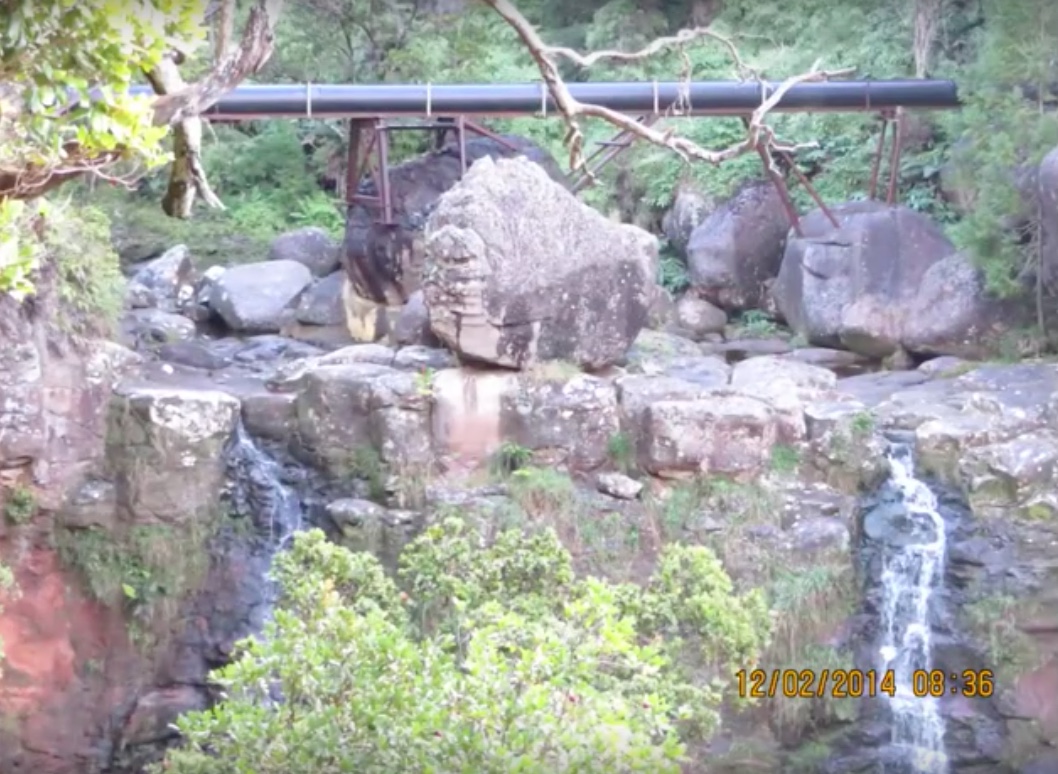Although it’s standard for the state Commission on Water Resource Management to seek information about how diverted stream water is being used so that it can determine if those uses are reasonable and beneficial under the state Water Code, the Kekaha Agriculture Association, at least, and in particular its seed company members, seemed to think it was none of the commission’s business.
In May, Water Commission chair Suzanne Case posed more than a dozen questions about water usage to KAA and the state Agribusiness Development Corporation as a way to obtain the depth of information the commission needs to decide on Po`ai Wai Ola — West Kaua`i Watershed Alliance’s 2013 waste complaint and petition to amend interim instream flow standards of several West Kaua`i streams and Waimea River.
In KAA’s response to Case’s questions, BASF, Pioneer Hi-Bred International, and Syngenta stated that they objected to being asked to estimate their water use “to the extent that it does not properly take into account and consider the fact that such estimates may have limited predictive value because agricultural activities vary greatly as to acreage, crops, land ownership and other parameters,”including changes in weather, business needs, and market demand.
The KAA stressed that diversified agriculture is a core value protected by Hawai`i’s Constitution and “a fundamental goal of the ADC.” And because the agency is required to conserve and protect agricultural lands, promote diversified agriculture and assure the availability of agriculturally suitable lands, “[t]his casts doubt on the ultimate relevance of such water estimates to commission evaluation of the issues in this proceeding,”the KAA stated.
BASF, Pioneer, and Syngenta object to the information request because “irrigation uses must properly consider the highly integrated and interdependent nature of all aspects of the agricultural infrastructure,”the KAA wrote.
Still, it answered some things.
For one thing, it did attempt to provide an estimate of water use. No actual measurements have been taken and are not required by any of the license agreements between the ADC and the KAA.
KAA borrowed the Kaua`i Water Use and Development Plan’s estimate of water needs for diversified agriculture —3,400 gallons per acre per day —and applied that to its current license areas. BASF’s 977.25 acres would require 3,322,660 gallons per acre per day or 3.32 mgd. Pioneer’s 1,337.07 acres would require 4.55 mgd. Syngenta’s 1,785.07 acres would require 6.07 mgd.
“Total estimated use for these lands is 13.94 mgd,”the KAA stated. (The ADC in its response noted that “there has been some discussion”over whether seed corn crops should be classified as diversified crops. Also, in a later submittal, BASF, Pioneer, and Syngenta provided much lower estimates of water use.)
KAA argued that it manages the agricultural infrastructure in a manner that “does not involve dumping or waste.”The Koke`e and Kekaha systems provides water not only to KAA members, but also to kuleana and taro farmers using the Menehune ditch system, the Department of Hawaiian Home Lands, the Department of Land and Natural Resources for recreational fishing and public sanitation benefiting tourism, and Kaua`i County to operate the Kekaha landfill, “all for the public benefit,”the KAA stated.
What’s more, the organization argued, pumps powered by the diversions keep the water table low enough to allow farming and keep the area from flooding.
Since 2003, KAA has diverted 22.7 million gallons of water a day from headwater streams to supply the Kekaha irrigation system. That’s compared to 31.1 mgd diverted between 1980 and 1999 by the Kekaha Sugar Co., the KAA pointed out.
“The KAA agricultural infrastructure requires approximately 21 mgd for irrigation purposes and to maintain these reasonable and beneficial uses,”it stated, adding that over and above the 13.94 mgd needed for BASF, Pioneer and Syngenta, “KAA estimates that additional ADC lands not licensed to ADC members increase this total to 17.64 mgd.”
From the Koke`e irrigation system, KAA estimated that Wines of Kaua`i receives 0.29 mgd.
Since 2003, KAA diverted an average of 8.3 mgd from headwaters to the Koke`e system, compared to 15.2 mgd diverted for sugar between 1979 and 1999, KAA stated.
“The KAA respectfully submits that the release of approximately 300 gallons per minute or 0.4 mgd is necessary and appropriate to protect public health and safety and safeguard the operational viability of the Koke`e system before and after the Kauhao sluice,”it continued.
The KAA stated that maintaining flow throughout the Koke`e system is necessary to keep its tunnels from drying, cracking, and possibly collapsing and to suppress vegetation growth and debris accumulation.
The KAA made the same argument for diverting 0.4 mgd into the Kekaha system at the end of the Koke`e system. The flow, it stated, was necessary to keep the unlined ditch between the Pu`u Lua reservoir and the field 635 settling basin from drying out, cracking, and possibly collapsing.
“If this occurred, it would eliminate the only source of water available to users of the Menehune ditch system and kuleana users when the Kekaha system is shut down for repairs,”it stated.
— Teresa Dawson


Leave a Reply